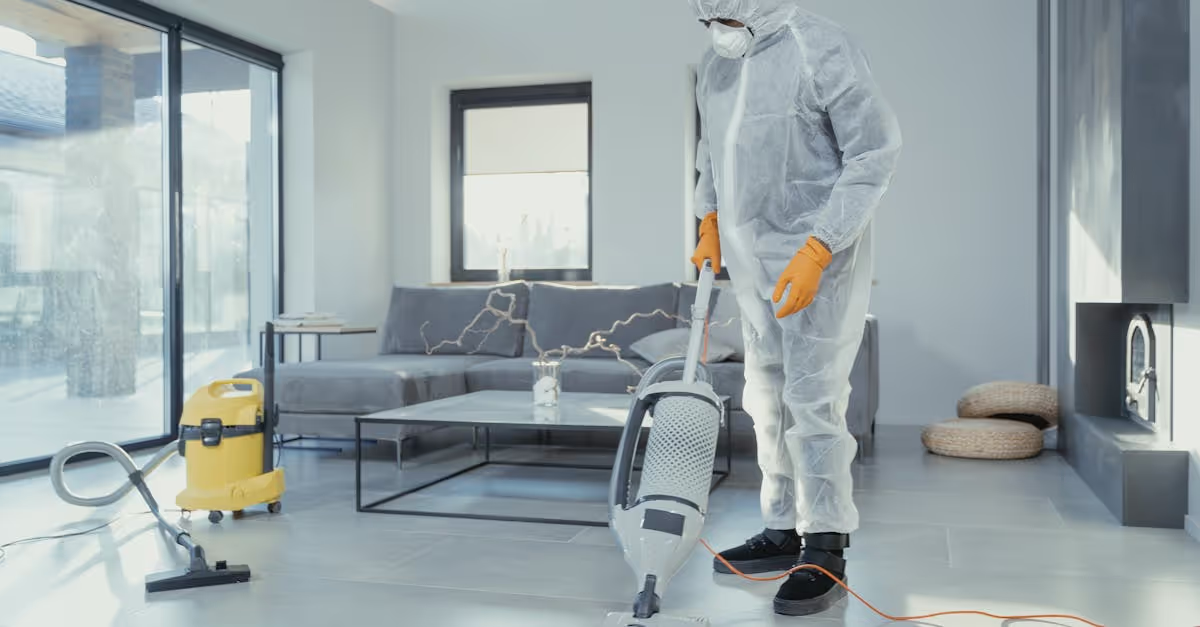Key Takeaways
- Importance of Vacuuming: Regular vacuuming is crucial for maintaining a clean and healthy swimming pool by removing debris such as dirt, leaves, and algae.
- Types of Pool Vacuums: Familiarize yourself with the three main vacuum types: manual vacuums for control, automatic cleaners for hands-free operation, and robotic vacuums for independent cleaning.
- Preparation Techniques: Always prepare your pool before vacuuming by removing large debris, checking water levels, and priming the vacuum to ensure optimal performance.
- Effective Vacuuming Methods: Maintain a steady speed, divide the pool into sections, and overlap your vacuuming path for comprehensive coverage.
- Regular Maintenance: Perform daily, weekly, and seasonal maintenance on your pool vacuum to prolong its lifespan and ensure efficient cleaning.
- Troubleshooting: Common issues like loss of suction or mechanical noises can usually be resolved by checking for clogs, inspecting components, and following troubleshooting steps outlined in your vacuum's manual.
When it comes to maintaining a sparkling clean pool, vacuuming the floor is crucial. Did you know that 80% of pool owners struggle with keeping their pool floors debris-free? Whether it's leaves dirt or algae, a clean pool not only looks inviting but also ensures a healthier swimming environment.
Overview of Pool Vacuuming
Vacuuming the pool floor plays a vital role in maintaining its cleanliness and promoting a healthier swimming environment. Regular vacuuming removes debris like leaves, dirt, and algae, preventing buildup that can lead to algae growth and water contamination. With 80% of pool owners reporting challenges in keeping their pools clean, implementing effective vacuuming techniques becomes essential.
Understanding various types of pool vacuums helps simplify the cleaning process. We often find ourselves deciding between manual vacuums, automatic cleaners, and robotic vacuums. Each type serves a purpose based on the pool size and owner's preferences.
- Manual Vacuums: Manual vacuums require physical effort but allow for precise control. They're ideal for smaller pools or specific problem areas.
- Automatic Cleaners: Automatic cleaners, or suction-side vacuums, connect to the pool’s filtration system. They navigate the pool, collecting debris with minimal input from us.
- Robotic Vacuums: Robotic vacuums boast advanced technology. They operate independently, using sensors and motors to optimize cleaning efficiency, making them popular among many pool owners.
Familiarizing ourselves with these vacuum types promotes informed choices when it’s time to clean. Using the right vacuum tool optimizes our efforts, leading to a cleaner pool.
Next, we focus on techniques that maximize the effectiveness of the vacuuming process. Preparing the pool before vacuuming involves a few key steps.
- Clear Debris: Remove larger debris manually. It prevents clogging the vacuum and makes the process smoother.
- Check the Water Level: Adequate water levels ensure the vacuum operates efficiently and reduces the risk of damage.
- Prime the Vacuum: Properly priming the vacuum before use enhances suction power.
While vacuuming, employing effective techniques matters. Maintain a consistent speed for comprehensive cleaning. Slow and steady motions allow vacuuming systems to absorb dirt and debris efficiently.
Additionally, vacuuming in sections can make the process more manageable. We can divide the pool into quadrants, ensuring complete coverage. While tackling these sections, it's best to overlap slightly, preventing missed areas.
Lastly, keeping a regular vacuuming schedule contributes to a consistently clean pool. Depending on pool usage and surroundings, we might vacuum once a week or more frequently during peak seasons.
Types of Pool Vacuums
Understanding the different types of pool vacuums helps us choose the right one for our needs. Each type serves specific purposes and can make our pool maintenance chores easier.
Suction Pool Vacuums
Suction pool vacuums connect to our pool's filtration system. They rely on water flow to create suction, pulling debris from the pool floor. We can use them for above-ground and inground pools. With a lightweight design, they maneuver easily. Set-up involves attaching the vacuum hose to the skimmer or dedicated suction line. While they work efficiently in small areas, they may struggle with larger debris like twigs. They're best for regular maintenance to keep our pools clean. Examples of these vacuums include the Hayward PoolVac and the Zodiac Ranger.
Pressure Pool Vacuums
Pressure pool vacuums operate differently. They work by using water pressure from our pool's return jets. These vacuums push water and debris into a filter bag or canister. Their design allows them to handle larger debris with ease, like leaves and rocks. We connect these units to the skimmer or a dedicated pressure line, providing significant power. They deliver thorough cleaning without relying heavily on the filter system. Popular options in this category include the Polaris 280 and the Pentair Rebel. These vacuums excel in maintaining cleanliness in larger or heavily used pools.
Robotic Pool Vacuums
Robotic pool vacuums represent the future of pool cleaning. They run independently and require no connection to our pool's plumbing. Equipped with brushes and filters, they scrub and collect debris efficiently. We program them for specific cleaning cycles, making them perfect for busy homeowners. With advanced navigation systems, they adapt to our pool’s shape and size. Some models even feature smart technology that allows us to control them via smartphones. Notable examples include the Dolphin Nautilus and the iRobot Miracle Clean. These vacuums offer a hands-off cleaning experience, letting us spend more time enjoying our pristine pools.
Proper Techniques for Vacuuming Pool Floors
Vacuuming pool floors requires specific techniques to maximize cleaning efficiency. Following these steps makes the process simpler and more effective.
Preparing the Pool for Vacuuming
Preparation plays a critical role in successful vacuuming. Start by removing any large debris, like leaves and branches, from the pool surface. This reduces workload for the vacuum and minimizes clogging. Next, check water levels; they should be high enough to cover the skimmer. Finally, prime the vacuum according to the manufacturer's instructions. By taking these preliminary steps, we set ourselves up for a smooth vacuuming experience.
Vacuuming Methods
Different vacuuming methods cater to varied needs and pool types. For smaller pools, manual vacuums allow precise control and attention to detail. Automatic cleaners offer a more laid-back approach, using suction while we lounge poolside. Robotic vacuums offer the most automation, cleaning independently while we focus on other fun activities. Each method holds its advantages, so selecting one that fits our specific situation makes pool maintenance easier.
Tips for Effective Vacuuming
For effective vacuuming, a few tips can enhance our technique. Maintain a steady speed while moving the vacuum. This aids in capturing stubborn debris effectively. Dividing the pool into sections ensures we cover every corner, preventing missed spots. We can also use an extension pole to reach corners or deep areas without strain. Vacuum after heavy pool use or storms to keep the pool pristine. Following these strategies keeps our pool looking great and swimming-ready.
Maintenance and Care of Pool Vacuums
Maintaining pool vacuums ensures they function smoothly and last longer, keeping our pool floors clean. Regular care helps avoid unexpected breakdowns during the peak swimming season.
Daily Maintenance Practices
- Empty the bag or canister: We remove debris after each use to prevent clogs and maintain suction power.
- Inspect hoses: We check for leaks or cracks to ensure effective operation. Damaged hoses reduce cleaning efficiency.
- Rinse the vacuum components: We rinse brushes and filters with fresh water to remove dirt and debris after each session.
Weekly Maintenance Checks
- Clean filters: We remove and clean filters weekly to maintain optimal suction. Dirty filters can drastically affect performance.
- Check the wheels and brushes: We inspect wheels and brushes for wear. Replacing worn parts helps maintain effective cleaning.
- Examine the power cord: We inspect the cord for fraying or damage. A damaged cord can pose safety hazards.
Seasonal Maintenance
- Deep clean the vacuum: At least once a season, we disassemble the vacuum for a thorough cleaning. This prevents buildup and keeps it in peak condition.
- Store properly: During winter, we store vacuums in a cool, dry location. Leaving them out in the elements can cause wear and tear.
Troubleshooting Common Issues
- Loss of suction: If suction decreases, we check for clogs in hoses or filters. Clear any obstructions for effective cleaning.
- Strange noises: Unusual sounds may indicate a mechanical issue. We review the manual for troubleshooting procedures or consider professional repair.
- Movement problems: If the vacuum struggles to move, we inspect the wheels and brushes. Adjust or replace them if necessary.
Importance of Regular Maintenance
Regular maintenance prolongs the life of our pool vacuums. Just like servicing our cars, keeping our vacuums in top shape prevents issues that might cause us to invest in costly replacements. Plus, a well-maintained vacuum makes our cleaning routine more efficient. We all want a sparkling pool without the hassle.
Maintenance isn’t just about cleaning; it creates a bond with our equipment. It’s like tuning into our favorite song. By keeping our vacuums up to date, we maximize their performance while enjoying the process.
Conclusion
Vacuuming our pool floors is essential for maintaining a clean and healthy swimming environment. By choosing the right type of vacuum and employing proper techniques, we can tackle debris effectively and keep our pools inviting. Regular maintenance of our vacuum not only enhances its performance but also extends its lifespan, ensuring we get the most out of our investment.
Establishing a consistent vacuuming routine tailored to our pool's needs will make a significant difference in cleanliness and enjoyment. With the right approach, we can transform our pool into a sparkling oasis ready for relaxation and fun. Let's commit to making pool care a priority and enjoy the benefits of a pristine swimming space.
Frequently Asked Questions
Why is vacuuming the pool floor important?
Vacuuming the pool floor is essential for maintaining cleanliness. It removes debris like leaves, dirt, and algae, ensuring that your pool looks great and provides a healthier swimming environment. Regular cleaning also prevents the buildup of harmful bacteria.
What are the types of pool vacuums?
There are three main types of pool vacuums: manual vacuums, automatic cleaners, and robotic vacuums. Manual vacuums provide precise control, automatic cleaners connect to your pool's filtration system, while robotic vacuums operate independently, using advanced technology for efficient cleaning.
How do I prepare for vacuuming my pool?
Before vacuuming, clear larger debris from the surface, check water levels to ensure proper operation, and prime the vacuum for effective suction. These steps will help maximize the vacuuming process and ensure thorough cleaning.
How often should I vacuum my pool?
Establish a regular vacuuming schedule based on pool usage and environmental factors. Typically, vacuuming once a week is ideal, but increase frequency after heavy use or storms to maintain a consistently clean pool.
What maintenance is required for pool vacuums?
Regular maintenance for pool vacuums includes daily tasks like emptying the bag or canister and inspecting hoses for leaks. Weekly checks involve cleaning filters and examining brushes, while seasonal maintenance covers deep cleaning and proper winter storage.
What are common issues with pool vacuums?
Common issues include loss of suction, strange noises, and movement problems. Troubleshooting can involve checking for clogs, inspecting connections, and ensuring the vacuum is primed. Regular maintenance can often prevent these issues from occurring.
How do I choose the right pool vacuum?
Choosing the right pool vacuum depends on your pool type and size. For small pools, a manual vacuum may suffice, while larger pools benefit from automatic or robotic vacuums that handle more debris efficiently. Assess your cleaning needs to make the best choice.






